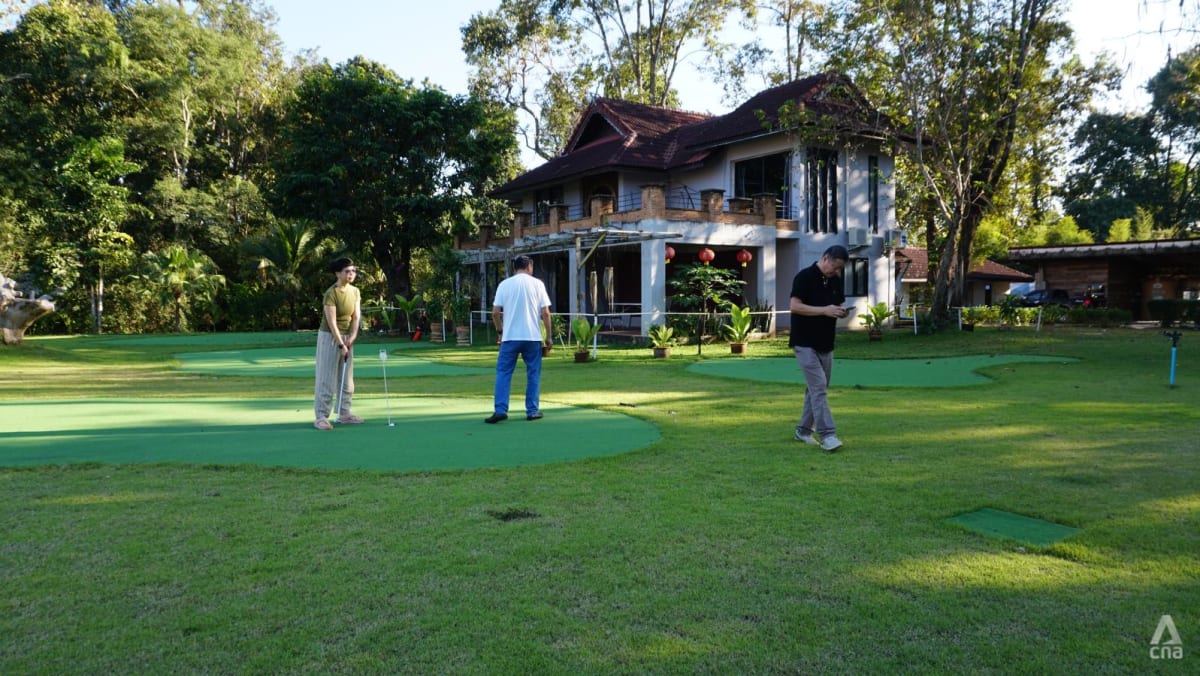With climate change gaining prominence, there’s a concerted effort around ensuring eco-friendly, well, everything – including end-of-life processes. While traditional fire cremation burns fossil fuels, known pollutants that can emit harmful substances like carbon monoxide, heavy metals, and particulates, water cremation offers a cheaper, greener alternative.
What is water cremation?
Water cremation, also known by its scientific name alkaline hydrolysis or the more colloquial term ‘aquamation,’ involves placing a deceased person’s body into a large steel chamber filled with 95% water and around 5% alkaline solution (potassium hydroxide, sodium hydroxide or a combination of both) and heating it to around 90 °C (194 °F) for about 10 hours, although temperatures and times vary.
The gentle circulation of water, which never boils, and alkali works to break down the body to its natural elements: amino acids, peptides, salts, and sugars. Essentially, the process speeds up and mimics what naturally occurs to a body when it’s buried. All that remains after the process is bone fragments (calcium phosphate), which are dried and cooled and then crushed into ash and returned to the deceased person’s survivors, just as with a standard cremation.
Cremation Association of North America (CANA)
However, aquamation produces up to 30% more ashes, and the remains have effectively been sterilized, making them, in many cases, safer to handle than a dead body. Because the water left over after aquamation no longer contains alkalis, it can safely be returned to the natural ecosystem.
Unlike traditional cremation, which requires a mortician to remove medical devices or implants that contain batteries, radiation, pressurization or silicone prior, with aquamation these items remain in the body and are left over afterwards. They can be returned to the family along with the ashes. Advocates of water cremation regard this as an added layer of dignity and respect for the deceased.
Water cremation: A short history
Englishman Amos Herbert Hobson was issued a US patent in 1888 after discovering that alkaline hydrolysis was an excellent way of processing animal carcasses into plant fertilizer. It wasn’t until 1994 that the next aquamation-related patent was issued, to Albany Medical College colleagues Gordon Kaye and Peter Weber, who showed that Hobson’s process aided in the safe disposal of animals that’d been used as research subjects. Kaye and Weber sold and installed over 75 alkaline hydrolysis machines – called a ‘tissue digester’ when disposing of animal remains – over the next decade.
When their business folded in 2006, former president and CEO Joseph Wilson set up Bio-Response Solutions, while Sandy Sullivan, head of European operations, formed Resomation in Scotland the following year. Ohio funeral director Jeff Edwards asked Bio-Response to provide him with a machine in 2010 and started offering aquamation to his clients early in 2011. After performing 19 processes, however, state regulators stopped issuing Edwards permits for disposing of bodies in this way, and aquamation has been off the table in Ohio since. The legal status of aquamation elsewhere is discussed more in the next section.
Legal, religious, and personal considerations
According to 2018-19 data from The Cremation Society, fire cremation rates vary widely around the globe. Japan has the highest rate at 99.97%, Australia at 69.23%, and the UK at 78.10%. In the US, 54.59% of deceased persons are cremated, whereas the rate is 73.12% in Canada.
People may have their own personal reasons for preferring cremation over traditional burial. A long, slow decomposition process may be unappealing to them, for example, or they might prefer a more eco-friendly approach. However, cultural and religious considerations heavily influence these data.
While Hinduism and Jainism prescribe cremation, Orthodox Judaism and the Eastern Orthodox Church prohibit it, and Christians discourage cremation because they view it as a desecration of God’s image. These factors account for low rates of cremation in the United Arab Emirates (1.25%), Greece (3.42%), and Ghana (6.41%). However, there are no figures on aquamation specifically.

Legally, alkaline hydrolysis is considered to be cremation. Currently, in the US, 24 states permit aquamation as a method of final disposition of human remains, with legislation pending in New Jersey, New York, North Carolina, Ohio, Pennsylvania, and Virginia. In Australia, only two companies offer alkaline hydrolysis: Aquamation in New South Wales and Alluvium Water Cremations in Tasmania. In July 2023, the BBC reported that water cremation “will arrive in the UK soon.”
Water cremation received a sort of ‘PR boost’ in 2022 when anti-apartheid crusader Archbishop Desmond Tutu requested and underwent the process after he died at age 90. And, as has already been mentioned, people nowadays are keenly aware of matters of eco-friendliness and that burial space is becoming increasingly scarce.
Then there’s the world’s aging population to consider. According to UK experts, it’s expected that those of the baby boomer generation will reach ‘peak death’ in around 2034. It makes sense, considering that the most common birth year for boomers was 1947, and the average lifespan for UK baby boomers is around 87 years, although this differs between countries.

Australian Government figures showed that in 2022, 68% of deaths registered in the country were among people aged 75 and over. Although baby boomers are no longer the largest generation group in the US – the millennials surpassed them in 2023 – they still make up 70% of the population. So, the time to have that end-of-life conversation, no matter how uncomfortable, is now. That includes considering all the options.
Is water cremation more eco-friendly?
In 2011, Dutch researchers published a report on the environmental impact of four funeral techniques for the Netherlands Organization for Applied Scientific Research (TNO). The report, commissioned by funeral chain Yarden, is available as a PDF.
Considering 11 environmental impact categories for each technique, including global warming, human toxicity, and land competition, the researchers compared burial, fire cremation, cryomation (freezing a body using liquid nitrogen and then shattering it), and water cremation. They reached the following conclusions regarding the total environmental impact of each technique for the average deceased person in the Netherlands:
- Cryomation and water cremation had the lowest environmental impact across all categories.
- Burial has the highest environmental impact in all the impact categories.
- Cremation has an environmental impact in all categories that is somewhere in between the other options.
- The impact of water cremation is (probably) the lowest of all funeral techniques.
These findings fit with the ‘green’ claims made by aquamation companies. Resomation says that the process uses five times less energy than fire and reduces greenhouse gas emissions by about 35%. Alluvium Water Cremations states on its website that “there are no direct emissions of harmful greenhouse gases or mercury to the atmosphere. This process does not burn any fossil fuels. It is very energy efficient – greater than 90% energy savings compared to flame cremation, with 10% of the carbon footprint.”
The Environmental Benefits of Water Cremation
Compare this to the environmental cost of burial. According to a 2012 article in the Berkeley Planning Journal, it’s “approximately 30 million board feet of hardwoods, 2,700 tons of copper and bronze, 104,272 tons of steel, and 1,636,000 tons of reinforced concrete,” each year in the United States. That’s in addition to the “approximately 827,060 gallons of embalming fluid, primarily formaldehyde”, that are pumped into the deceased person’s body and buried along with them.
Regarding cremation, the article states that the “process releases carbon monoxide, fine soot, sulfur dioxide, and heavy metals into the atmosphere. Mercury emissions from dental fillings are of particular concern. Additionally, cremated remains are sterile, and so do not contribute nutrients to ecological cycles.”
At the end of the day, it comes down to how a person would prefer to exit this world. There is an obvious ‘ick’ factor when it comes to water cremation. However, with the increased cost of funeral techniques like burial and traditional cremation, the scarcity of burial space, and the relative importance of environmental considerations, water cremation may become the preferred alternative. Regardless, it looks like it’s here to stay.







